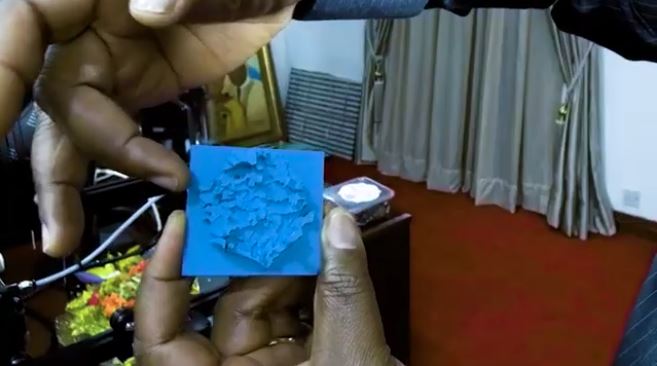![Sierra Leone President Julius Maada Bio shows off a 3D printed data map [Image: YouTube]](https://fabbaloo.com/wp-content/uploads/2020/05/sierraleone3a_img_5eb094843e47f.jpg)
3D printed data models are helping the Sierra Leone government make decisions about educational policy.
Education is a major issue around the world, and while we often hear about these from the perspective of curriculum or a focus on STEAM (science, technology, engineering, arts, mathematics) subjects, or even about preparing the next generation of the workforce with next-generation technologies, sometimes the issue is much more foundational: access.
Understanding Data
In Sierra Leone, educational access is varied across demographics and regions. Two large issues faced are transportation in order to physically get to schools’ locations and the underrepresentation of girls in schools.
In order to address such issues, the issues themselves must first be understood and examined, which requires a good deal of data analysis. Sierra Leone is getting more hands-on with its data as under the direction of President Julius Maada Bio a 3D printer is now being brought into play to create physical representations of the information.
![President Bio with a 3D printed data model and an Ender 3D printer in his office [Image: YouTube]](https://fabbaloo.com/wp-content/uploads/2020/05/sierraleone2a_img_5eb0948493ecb.jpg)
The World Economic Forum (WEF) reports that this tactic is opening up the conversation:
“It was difficult for other people to fully participate in the discussions because there were no screens at the table. The Directorate of Science, Technology and Innovation (DSTI), located in State House, engaged immediately to calculate the distribution of out-of-school girls in each chiefdom and generated an accurate representation of the analyses in a 3D model.”
3D printed data maps offer an immediate and tactile understanding of issues: high peaks indicate areas in the nation where girls have the lowest attendance in primary school, and where an area shows the most students needing to walk to reach their schools, indicating a lack of vehicle-worthy roads for bus routes.
Being able to handle the data maps allows for immediate understanding of a situation — and a way to broaden the discussion around that situation.
Opening Up the Conversation
![Discussing data over a 3D model in President Bio’s office [Image: YouTube]](https://fabbaloo.com/wp-content/uploads/2020/05/sierraleone1a_img_5eb09484e11e3.jpg)
These models recently came into use in a policy discussion between President Bio and Mary Hunt, the head of the UK’s Department for International Development, with whom the messaging resonated.
“The fact you can pick it up and turn it around to see different aspects of the map makes you feel like you are there – in Kenema, Kabala or Bonthe – seeing the challenges in people’s lives and what needs to change. I was so drawn to its clarity and potential, I had to ask the president if I could take it with me – I wanted to share it with others,” said Hunt.
The clarity she notes is an obvious benefit: once the walking distance model was 3D printed, it was quite quickly clear that the Gola forest area had the highest peak when cabinet ministers and senior government officials sat down with the model. This led to new examination of the status of roads in the area, from what had begun as a conversation about potential distribution of new government buses around the country. For buses to be effective, that is, passable roads are needed first. And perhaps new schools could be built in more ideal locations, as the DSTI team is using the 3D printed models for further analysis in this case.
Such expanded topics of discussion are likely to continue as the 3D printed data proves its value to the government, as the WEF notes:
“In Sierra Leone, these data-driven policy conversations also happen at other levels: the Ministry of Basic and Secondary School Education and education sector partners now actively use a combination of interactive dashboards of national school census data and 3D printed models in meetings.”
Technology in Decision Making
Sierra Leone is certainly not the first government to turn to 3D printing, but this use case is unique in several aspects. Bringing the 3D printed models right into policy meetings with both domestic and international government members shows a move into the 21st century on a continent where we hear relatively little about practical uses of 3D printing.
That technology is helping to broaden the message and deepen the understanding is indicative of the viability of Industry 4.0 across the world.
See more about Sierra Leone’s usage in this video from the Official YouTube Channel of The Office of The President. Republic of Sierra Leone:

